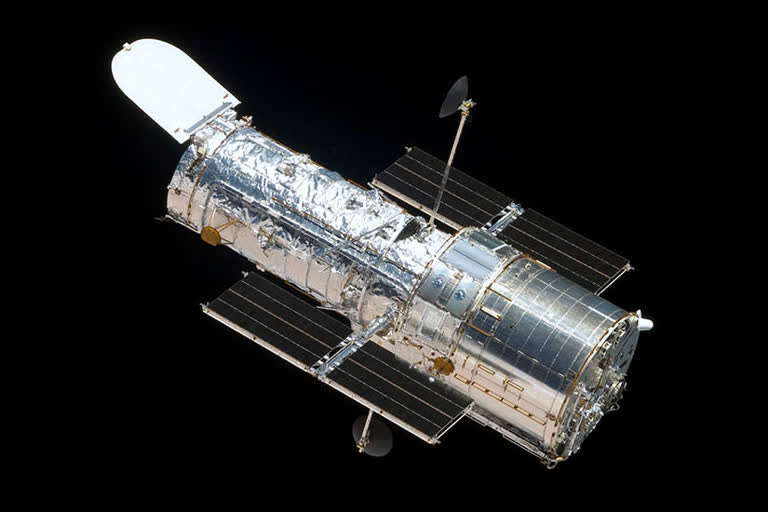Hyderabad: It's been 30 years since the National Aeronautics and Space Administration (NASA)- an independent agency of the United States Federal Government responsible for the civilian space program, as well as aeronautics and aerospace research, had launched the largest telescope-'Hubble'--the most important scientific tool ever built.
The name 'Hubble' named after American astronomer Edwin P. Hubble- a leading astronomer of the twentieth century. His discovery in the 1920s that countless galaxies exist beyond our own Milky Way galaxy revolutionized the understanding of the universe.
Hubble- which is often called the people's telescope as it brought the Universe to the people- has a length of 43.5 ft- almost a size of a school bus and weighs about 24,500 lbs (11,110 kilograms), is a joint venture of NASA and the European Space Agency.
It was launched on April 24, 1990, from space shuttle Discovery (STS-31) and was deployed into service on the very next day.
NASA claims that the telescope charges itself from the energy of the Sun. It has two 25 feet solar pannels which push them to gain a speed of 17,500 mph (28,000 km/h). It means the telescope can complete one revolution of the Earth within 97 minutes.
Till date, it has provided a remarkable glimpse of planets, stars, and galaxies that have transformed our view of the cosmos. The telescope also helped in finding of the four moons around dwarf planet Pluto.
On its 30th birthday, let's have a glimpse of the influential accomplishments:
- Age of the Universe: Thanks in part to the Hubble Space Telescope, we know the universe is 13.7 billion years old.
- How Planets Form: The Hubble Space Telescope has helped scientists determine the process of how planets are born.
- Extra solar Organic Matter: The Hubble Space Telescope detected the first organic molecule discovered on a planet outside our solar system.
- Dark Energy: It has detected a distant supernova that suggests the universe only recently began speeding up.
- Black Holes: Hubble discovered that super-massive black holes probably lurk in every galaxy that has a bulge of stars at its centre.
- The rate of a universe expanding: In July 1994, just seven months after the first shuttle servicing mission, fragments of a comet torn apart by Jupiter's gravity slammed into the giant planet's atmosphere, blasting world-size blemishes in the cloud tops that were easily visible to amateur and professional astronomers alike.
- Mysterious star-eating: Spotted evidence for a mysterious star-eating black hole at the edge of another galaxy, and celebrating its 30th birthday.
It also transmits about 120 gigabytes of science data every week. That would be roughly 3,600 feet (1,097 meters) of books on a shelf. The collection of pictures and data is stored on magneto-optical disks.
Also Read: Exoplanet that vanished from sight likely never existed



